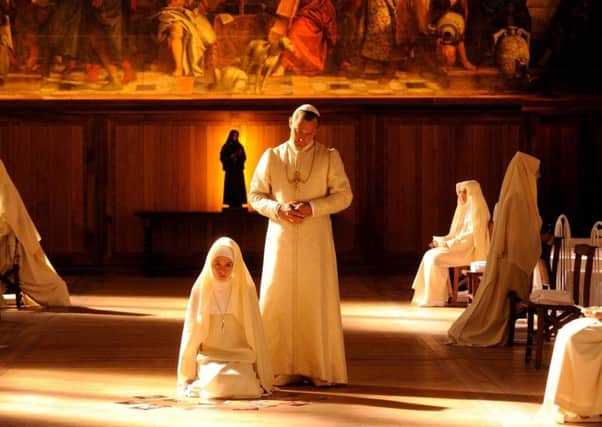The Pope doesn't have to be young and gorgeous to be worth watching


The combination of director Paolo Sorrentino’s capacity for visual orgies of natural and constructed beauty, the breathtaking splendour of Rome at its baroque best and the mystique inherent in the office of the Papacy make Sky Atlantic’s latest offering a heady cocktail.
Viewers have been catapulted on a rollercoaster of sights and sounds which owe something to the Borgias and much to Fellini (already there are echoes of the ecclesiastical fashion parade of his 1972 classic film, Roma).
Advertisement
Hide AdAdvertisement
Hide AdThis is television made for cinema, or maybe cinema made for television, where a plot is present somewhere buried under setting, characterisation and costume.


The Vatican’s attitude to The Young Pope has been interesting. It has been as muted as Sorrentino’s characters have been extravagant. Intelligently, there has been no thundering condemnation from within the Leonine walls of the film’s take on the Papacy.
It is heartening to see that the new media regime at the Holy See, headed by young Italian monsignor Dario Viganò and American journalist Greg Burke, understands the lesson that there is nothing so spectacularly counterproductive than for churchmen to condemn artistic expression. (Not for nothing did early 20th- century publishing houses clamour for their authors to be included on the Vatican’s now-discontinued list of forbidden books!)
I remember with a mix of horror and embarrassment the stuttering embarrassment of the condemnation a decade ago of Peter Mullan’s The Magdalene Sisters as an “Anti-Catholic film”. Rather, Mullan’s movie was a powerful expose of the danger of church and state becoming so fused together as to become inseparable, with dire consequences for the human beings stuck in the middle and the institutions themselves.
Sorrentino’s production is light years away from Mullen’s in feel and look (obviously, given the very different content matter). The damp Irish winters of the Magdalene laundries are replaced by the rich and sumptuous visuals of Sky Atlantic’s Rome.


But while The Young Pope’s cinematography cannot but be enjoyed, its stereotyping is somewhat jaded: plotting cardinals, food-obsessed nuns, subservient curates and camp cliques all appear in the first two episodes. They were all present in much the same proportions in the BBC’s series The Borgias, almost 40 years ago. Mullen’s ruddy-faced Garda and cleanliness-obsessed Mother Superior were far more believable.
For anyone looking for a less visually sumptuous, but more intriguing, insight into the papacy, what about the amazing (and true) phenomenon currently unfolding on our screens, known as Pope Francis?
Have you seen the episode about a Pope who chooses to wash Muslim women’s feet in the middle of a Vatican ceremony? Or the one in which he gives up his summer palace and turns it over to the public? What about the scene when the Pope greets a former student with his same sex partner at a reception in a Papal nunciature? Or the sequence where he orders showers to be built for the homeless in St Peter’s Square, before announcing that the most sought-after tickets on Rome’s social scene – passes to the live TV broadcast of the Vatican Christmas concert – will this year be distributed free to the poorest of the poor?
Advertisement
Hide AdAdvertisement
Hide AdThe truth is that at this particular moment of history, truth is stranger than fiction. The old Pope is more interesting than The Young Pope. The real Pope is more dramatic than the fictional Pope. And the Pope of history is more impressive than the Pope of the movies.
None of this is to say that Sorrentino has not produced a magnificent visual treat. Nor that his insights do not offer food for thought to those who wonder and observe at the role of the Catholic Church in the modern world. Indeed, the sequence with Pius XIII appearing to the crowd shrouded in darkness so as not to become a distraction between man and God raises profoundly interesting and somewhat uncomfortable questions for many modern Catholics.
But for those seeking to pose the question: “Who is the Young Pope?” there is no better answer than that provided by an Italian critic on Twitter. “Non un Papa buono ma bbono”– “Not so much a good Pope, just a good-looking Pope”
Ronnie Convery, Director of Communications, Archdiocese of Glasgow.